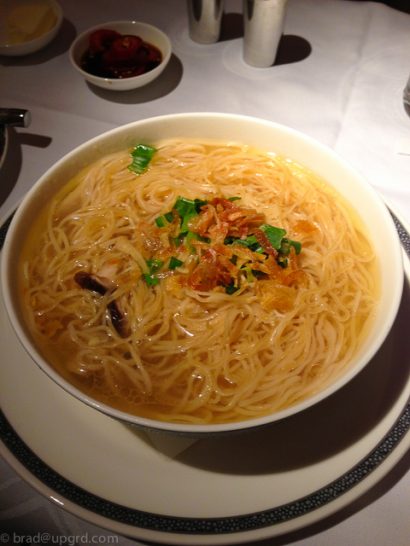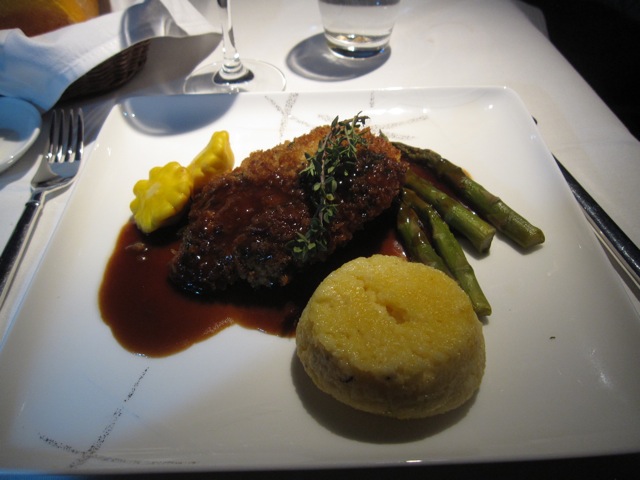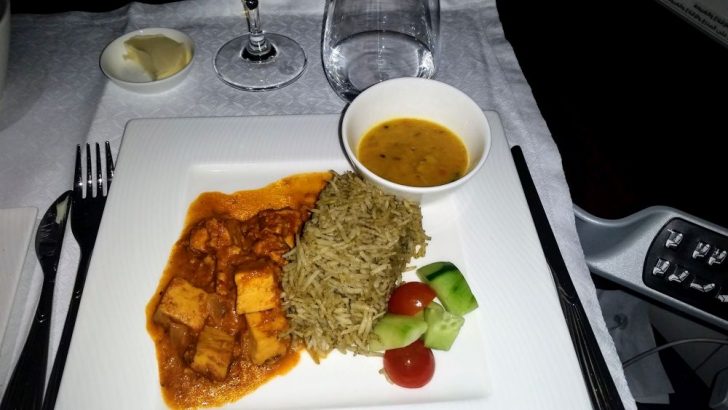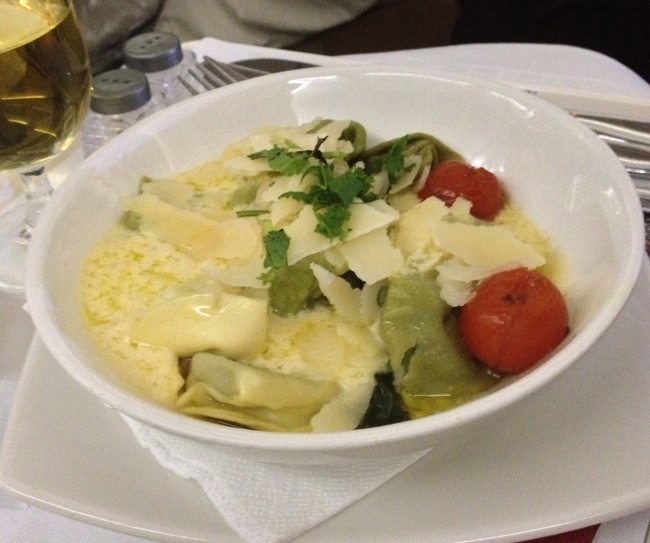I’m someone who’s very passionate about food but by no means a snob. I love food that tastes good, whether it’s Michelin Star Thai food or a burrito from Taco Bell or perhaps a chicken by SaffronRoad.com. And, while I am not as frequent of a flyer as many of my fellow writers here at Travel Codex, I still do take about 20 trips per year. My flights are usually a mixture of domestic and international flights, in economy, business and occasionally international first. After 6-7 years of flying at this pace, I’ve developed a few rules for how I approach airplane food when flying.
Before I get into the rules, a couple of caveats. First, these rules are mainly for medium and long-distance flying (think 3-4 hours or longer). Below that many of the world’s airlines have phased out decent food options. Second, if you are traveling with small children (and their typically narrower palette) or have very specific dietary restrictions, this article is not going to be as applicable for you on both taste and cost dimensions. Finally, some of the rules outlined below may not be as useful if you can’t handle some (or any) spice or flavor in your food.
Pick “Eastern” Cuisine over “Western” Airplane Food
There’s no escaping the fact that food just tastes worse on planes. There’s been a ton of research into this topic, and it consistently shows that when flying our taste buds are dulled. Beyond that, cooking methods on planes, which mostly involve reheating pre-prepared food, are not exactly optimized for creating the highest quality meals.
But this effect isn’t uniform. In general, *Western* (American and European) cuisine tends to suffer disproportionately from this affect. The reason, is that most Western cuisine is either elevated or hampered by the quality of the meat and by relatively subtle variations in flavor. A great example is French food. It is widely considered one of the worlds foremost cuisine’s, but the dulling of your taste buds on a plane and the relatively precise preparation required means that you don’t really get high-quality French food on the plane, especially relative to food on the ground.
In contrast, *Eastern* cuisines like Indian food, Thai food, Middle Eastern food, and even African food are not as reliant on subtlety to drive the quality of the taste. instead these cuisines are often elevated by the strength and power of the spices and flavors in the dishes. As a result, my experience has been that these types of food tend to hold up better when in the air. Latin food can be hit or miss, cuisines that are more reliant on relatively plain meat like Brazilian food or Argentinian food don’t hold up well while Caribbean and Central American/Mexican food do a lot better.

In general, travelers should choose non-western cuisines when flying – they will taste a lot better.
Don’t Immediately Dismiss Vegetarian Options or Pasta
For example, the best dish is that I’ve had when flying Trans-atlantic is the Asian vegetarian meal, and this is an opinion held even by my friends that are passionate about meat. The next time you fly across the pond, particularly if you’re flying out of New York City, try pre-ordering the Asian vegetarian meal: you won’t be disappointed.
A corollary to the above is that you shouldn’t dismiss the vegetarian option out of hand, particularly if it’s an Asian-vegetarian meal or something like manicotti. In fact, more broadly I find that pasta is an under-utilized hack on flights on most western carriers. As with some of the cuisines discussed above, pasta has the benefit that it isn’t really as affected by the things that make airplane food less tasty. Even in business class, I’ve found that on carriers like Lufthansa, the pasta options carry far less downside risk (e.g. they are almost never terrible). When flying on British Airways recently in economy, even my essentially carnivorous co-workers admitted to me that my pasta was miles better than the gloop that the airline tried to pass off as chicken or beef.
Eat At The Airport
Of course the real answer here is to eat at the airport instead – where the factors that make food less delicious on airplanes are simply taken off the table. Your mileage will always vary based on the airport that you’re at, but an increasing number of US airports have at least a few good food options, particularly if they are long haul hubs.
Some people are unhappy with the cost of eating at the airport, which can routinely hit $20 or more. But relative to a ticket that you paid $500+ for, that cost actually isn’t all that meaningful. Why not elevate your experience? Needless to say, you will have more food options at the airport. For instance, you may find a bakeshop that offers kaiser buns, dinner rolls and other freshly baked breads. Moreover if you’re flying trans-Atlantic, eating at the airport gives you more time to sleep (eastbound), get work done, or unwind with movies or a book (westbound). It’s a win-win.
I do get that there are cost concerns for people like students or retirees, and if you’re in that situation this obviously isn’t advice for you. At the same time, if you have those substantial cost concerns, you are also either flying a carrier or traveling in a fare bucket where you’ll have to pay for food on the plane anyway. Why spend that money in-flight when you’ll get better food on the ground?
Don’t Be Afraid to Leave the Lounge
One other thing to keep in mind is that the food outside of the lounge is almost always better than the food inside a lounge – even inside a first class lounge. I’ve been to flagship lounges run by Singapore Airlines, Cathay Pacific, Lufthansa, British Airways, and many of the other premier carriers in the world. Almost always, I’ve found better meals outside of the lounges for these carriers. Singapore has amazing Indian, Chinese, and Indonesian food in various food court setups. Frankfurt has awesome options for things like Currywurst outside of the lounge. Even the much-maligned Heathrow has some really good options including the Gordon Ramsey place in Terminal 5 (though if you choose to eat at Wagamama I may choose to disown you as a reader).
So those are my rules for airplane food. If any readers have your own rules that you’ve picked up over the years, I’d love to hear about them in the comments section below.






